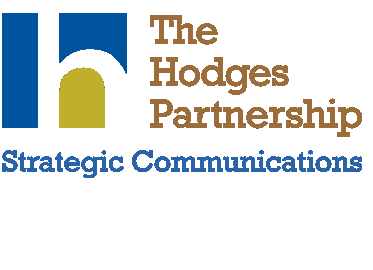Follow the Leaders
Navigating the Complex Terrain of HR Regulations
Today in business, there are more acronyms, legal agencies, and regulatory requirements than ever before. If you employ people in your business, you must understand and comply with these requirements, which can be daunting. The number of people on your payroll determine the magnitude of your time involved and, ultimately, the work expended to comply with the requirements. The full life cycle of an employee from recruiting strategies through terminations and all actions in between present opportunities for legal issues. The key is creating best practice processes, policies, and a workplace culture that protects your company and manages risk.
Where are we now? Every February the President’s administration releases its proposed fiscal year budget for the upcoming year outlining the White House’s priorities for the year ahead. Many of the items for FY 2019 contain a number of workplace-related proposals, specifically changes to labor, healthcare, and immigration. Below are the main topics to consider when assessing strategic decisions for your business and HR policy. While some of these areas are still in the proposal stage, they will be items to keep an eye on going forward.
LABOR
Paid Parental Leave establishes a federal and/or state paid parental leave program. Family Medical Leave Act (FMLA) was passed and allows for unpaid leave for up to 12 weeks if your organization meets the qualifications. A new regulatory proposal suggest that paid parental leave might be found and funded within the unemployment insurance program. These provisions, if passed, would begin in 2021. Another option is a voluntary Social Security (SS) benefit program that would provide pay during parental leave as an offset to future SS benefits for employees who wish to take six weeks (2019 proposal) of paid leave for mothers, fathers and adoptive parents to stay home to recover from childbirth or bond with their children. This federal legislation did not pass for this year but many states and companies have implemented a similar policy as a way to address retention.
Employees who work for the State of Virginia are now eligible for paid parental leave per the Governor’s Executive Order signed in 2018. The new benefits, which took effect last summer, provide eight weeks of leave at full pay to mothers and fathers alike. Workers who become parents through adoption or foster placement are also eligible.
DOL and Overtime
Held over from 2016, and still ongoing, are revisions to the Fair Labor Standards Act (FLSA) and overtime regulations. These regulations affect almost every employer and are paramount in the minds of employees in non-exempt status roles who are eligible for overtime compensation. In May 2019, the DOL has proposed revisions to allow employer specific policies and practices that will drive employee engagement, retain the current duties test, and adjust the nationwide salary level (using the same methodology used in previous rulemaking). The Department of Labor has proposed an increase in the salary-level threshold for white-collar exemptions by $11,648 (from $23,660 to $35,308 per year). If finalized, the new overtime rule would result in the reclassification by employers of more than a million currently exempt workers as nonexempt and an increase in pay for others above the new threshold. The proposal does not call for automatic annual adjustments to the salary threshold.
As an organization, consider the reclassification exercise as a way to review job duties, schedules, staffing levels, and salaries. This could have a profound impact on payroll and budgets by making more employees in the workforce eligible for overtime pay when converted from exempt to non-exempt. Above all, ensure that your approach is consistent across the organization.
The Second Chance Act (in the original budget proposal) supports individuals exiting prison to transition to community life and long-term employment through mentoring, job training, and other initiatives. Part of this effort includes apprentice programs at the state level to enable successful outreach strategies, partnerships, economic development strategies, and fuller integration into society. The First Step Act (legislation passed by Congress in December 2018) gives judges more discretion in sentencing offenders for nonviolent crimes and gives inmates credits for in-prison job training and education so they can earn early release.
HEALTH CARE
Affordable Care Act (ACA) proposals have contained funding for a two-year cost sharing reduction in subsidies. This will impact the individual market and may shift significant costs to employers and other private sector payers as well as the federal government.
Prescription Drug Costs
The Department of Health and Human Services (HHS) has published a proposed rule to lower the cost of prescription drug prices by encouraging drug manufacturers to pass their rebates directly to consumers (by-passing the pharmacy benefit managers). This proposal targets Medicare plans and other government health plans but, over time, will impact employer sponsored group health plans. If approved, the effective date is January 2020. In October 2018, President Trump signed into law the Patient Right To Know Drug Prices Act which allows pharmacists to discuss drug pricing with patients. Pharmacists may now educate consumers regarding their medication, pricing, and alternative cost-efficient options.
Association Health Plans and “repeal-replace” were debated throughout this past year, a lot still remains to be discussed and debated in the health insurance arena.
IMMIGRATION
I-9 Audits
U.S. Immigration and Customs Enforcement (ICE) have significantly increased the number of I-9 audits this past year due to new federal initiatives. It is expected that I-9 audits will continue to be a significant hot button for ICE in 2020. Small to mid-sized employers are especially vulnerable and are easy targets for fines. It is important to know: 1) How to complete the employer portion of the I-9 form, 2) What documents are acceptable, and 3) How to interpret those including expired documents. Ensure all I-9 files are kept separately from other employee files; they require ongoing maintenance and compliance.
Employment Verification
Over recent years, there has been a push for a nationwide mandatory process using E-Verify, the government’s electronic employment eligibility verification system for all employers. The same proposed funding includes staffing for more Immigration and Customs Enforcement (ICE) officers and additional worksite investigators. Much of the funding for these initiatives are a result of employer I-9 audits and associated fines.

Beth Williams is the Director of Human Resources at Warren Whitney. She has worked in human resource management for more than 25 years with experience that spans many diverse industries, including accounting, energy, financial services and banking, legal services, pharmaceuticals, IT, and non-profit.
Editors note: Image and content provided by Warran Whitney. This post article was originally posted here. Warren Whitney is a Sponsor of Virginia Council of CEOs.
Capital Sourcing Costs & The Risk Spectrum: A Bank’s Perspective
As a banker, we hear it a lot. As a borrower, you might have said it before. “My interest rate is so high. Can’t you come down on that rate a bit?” It seems like a fair question, especially given the current competitive banking environment. It always seems like banks are trying to attract your business but at the highest interest rate possible. As bankers, we do understand your concerns, especially when it seems like another bank down the road will offer you something different. But in the bigger picture, is a bank’s cost of capital really THAT high? That answer will most likely depend on the type of financing you are requesting based on the risk profile of your business.
While banks are providers of capital, they are usually the lowest risk provider in the market. For a bank, an investment is the loan that is being extended while the risk is the business’s ability to repay that debt. Just like most other investments, the higher the risk (i.e. the greater the concern for repayment of debt), the higher the return (the interest rate that will be charged).
FROM STARTUP THROUGH GROWTH PHASE, UNDERSTANDING THE SPECTRUM
Let’s assume you are in the process of starting a business. According to data provided by the U.S. Bureau of Labor Statistics, roughly 20% of small businesses fail within their first year while 50% fail by year five. Approximately 35% remain in operations after ten years. You have a business plan and you’ve identified human capital that will move the business forward, but you haven’t quite gotten off the ground. There is a lot of excitement and prospects for taking your idea to market. You need some form of capital, outside of what you can provide via your own personal equity, to handle projected expenses.
SEEDING THE STARTUP…
In the seed and startup phases, businesses often experience minimal revenues, net losses, and cash flow and working capital deficits. It is challenging for a bank to be comfortable with a new company’s ability to repay debt due to these factors and the overall statistics mentioned above. Because of this, businesses may be required to find capital sources through such things as crowd funding, angel investors, venture capital funds, and small business administration loans. Businesses that have utilized these sources of capital will tell you that this type of financing can include significant interest rates, the potential for loss of equity, and noted reporting requirements. Though needed to fund the risky startup phase, the costs are very high. The return, or the cost of that capital, will match the risk whether it is from outside financing or bank debt.
MOVING INTO GROWTH…
Great news! Your business made it through the startup phase and is now growing. Revenues are accelerating, net income is being realized, cash flow coverage is strengthening, but working capital needs are challenged. Your debt carrying costs continue to strain cash flow and make it harder for you to fund your business. The startup financing was vitally important, but it might be the perfect time to speak with a commercial banker about replacing your existing, costly third-party debt. You have proven that the market can and wants to absorb your products or services and there is positive cash flow. You’re now less risky because you have shown the ability to repay financing, but there is still noted risk as operating expenses fluctuate and are often unexpected as you grow. Though reduced, risk and limited positive operating results will often result in higher priced bank financing that will still reduce your overall interest expense related to expensive outside startup financing.
INTO MATURITY…
Finally, you’ve made it through the growth phase, and you are an established or mature business. Revenue growth is predictable while your profitability is strong and stable. Cash flows are adequate and your leverage is moderate because of your profitability. Equity in your business is strong and allows you to “weather the storm” that will inevitably come when economic conditions deteriorate. In these phases, you are most likely a great candidate for bank financing as a capital source and you should see a much lower interest burden due to your track record. In fact, you can probably even call the shots on your interest rate as every bank in town is clamoring for you. It took a while, lots of hard work, and varying capital sources, but your company has performed well. Your risk to the bank is low, and so is their return.
The truth is that banks are risk averse compared to other capital sources. Losses incurred by a bank lead to reduced capital levels and the ability to lend, and financial institutions have a fiduciary responsibility to their customers, shareholders, community, and Federal Examiners to be well capitalized. This leads stringent analysis in the underwriting phase to ensure that businesses have shown the ability to perform in a way that enables debt to be repaid. As the risk profile of your company lessens, so should your ability to find capital sources with reduced costs.
If you haven’t already done so, look for a commercial banker that will take time to discuss these areas with you, learn about your business, explore capital opportunities, and ensure that your interest rate is appropriate. Responsible bankers may also provide you with guidance around capital sources if they feel that bank financing is not available at that time. Most importantly, a strong and trusted banking relationship with open communication can provide an avenue for the bank to fully understand your business leading to financing opportunities in various company stages at lower interest rates.
Matt Paciocco is a Senior Vice President, Commercial Banker with Virginia Commonwealth Bank. Matt is passionate about working in a community bank that enables him to build strong relationships with his business customers and the surrounding communities. Matt has spent the last 15 years specializing in commercial banking and has positioned himself as a leading community banker in Richmond.
Editor’s note: Image and content provided by VCB. VCB is a Sponsor of VA Council of CEOs.
6 Steps to Managing Today’s Public Relations Environment
Public relations today is about more than being quoted in the paper or online. PR today is about driving traffic, sales and business. What used to be newsworthy – anniversaries, new buildings, new hires – isn’t as newsworthy anymore. And gone are the days of relying on your favorite newspaper reporter to tell your story to the masses. Today’s savvy business owner is pushing out stories directly to their customers and prospects, bypassing traditional media outlets all together.
“In the good old days, when you thought about public relations, you thought about media relations and telling your story through the media,” says Jon Newman, CEO of The Hodges Partnership. “The media was a lot bigger, more robust then. We gauged success by how many placements we could get in newspapers.” Today, he says, newspapers are shutting down and TV news coverage is becoming even more niche. Technology and social media have changed the game.
Jon has been in the media relations industry for more than 25 years, and he and his colleague Megan Irvin recently shared their PR knowledge at a VACEOs Lunch & Learn event in Charlottesville, Virginia. We learned that we currently live in a time where content is king, but it’s the social-savvy storyteller who really rules the PR kingdom.
Here’s where to begin.
MANAGING TODAY’S PR ENVIRONMENT
STEP #1: DO YOUR HOMEWORK
To become a good storyteller, you need to know your audience. Spend some time internally with your team and figure out who your audience is, what they like and where they live. You may have three or four different audiences. (Jon and his team like to create marketing personas for each customer type to really get into the mindset of each segment.)
Once you know who you want to speak to, use that information to craft your key message. Important: Keep in mind that it’s not about you. In other words …
STEP #2: GIVE ‘EM WHAT THEY WANT (BUT STAY ON MESSAGE)
Don’t create stories or posts about yourself. Create content based on what your customer wants to hear. Jon and Megan suggest conducting informal focus groups, or informally interviewing customers or friends, to learn what to communicate. Ask them, “If you were a potential customer of ours, what are the types of things you’d want to hear from us?”
Know what topics and content your customers want to hear more about, but also hold tight and true to your brand.
“Know the key messages that you want to get across: ‘No collusion, no obstruction,’” says Newman. “What are your versions of that? What are the things you want to say? What are the three to five things you want to say over and over and over again? And if you’re in a service-oriented business, please don’t say that your customer service is better than anybody else’s, because everybody says that. Spend some time and really figure out what makes you different, what you’re going to sell.”
You know what you want to say. Now set specific goals for your content and make sure your internal team is on board.
STEP #3: SET YOUR GOALS
In general, there are three levels of content:
- generating brand awareness and website traffic;
- generating leads;
- associating your brand with a cause, topic subject.
New to the PR game? Start with creating content that builds brand awareness.
“The first level is about getting people to know your company and driving them to your website,” says Newman. “The second level – lead generation – is the world where you’re driving [prospects] to your website and you’re driving them to an offer, like a white paper or report, in exchange for their name, their title, their company and their email address.”
Once you have this fundamental information, you can use it to start building an email database and strategy to continue to nurture the business relationship over time.
The third level of content is brand journalism – “which is not as much about selling your product, but selling your brand in a way that people associate your brand with a certain movement or certain topic,” says Newman.

You know what you want to say. Now, where and how are you going to tell your story? Are you going to go the more traditional route, or are you going to go online and take advantage of social media, blog posts, podcasts, influencers, etc.?
A word about social media.
Newman cautions that the demographics behind the well-known platforms are changing. “Facebook, which used to be for my daughter, is now for my mother,” he says. “Instagram and Snapchat are now for my daughter and son. Twitter is for me, and YouTube is for everybody.”
LinkedIn and similar platforms offer business owners the ability to target the right audiences with the right message at the right time.
STEP #5) DON’T FORGET TO LEVERAGE YOUR INTERNAL TEAM
A subtle but important takeaway: Don’t forget to communicate your content strategy with your internal team before you launch a campaign. Also, be sure to keep everyone in the loop as posts go up, and make sure you regularly encourage team members to comment and share the content you’ve posted.
Make a point to commit to communication. Remind your employees of your PR goals and your key brand messages in staff meetings and in every internal communication — these are “little reminders along the way where they understand what your brand is and what you want,” Newman explains.
STEP #6) KEEP IT VISUALLY APPEALING. AND KEEP IT GOING!
The best content is dynamic and targeted, and not just written word. Think infographics, photos and video. “So, overall, [PR is] easier in a lot of ways – and it’s harder,” says Newman. “The stories need to be more defined. The audiences really need to be more defined. The content needs to be planned and ongoing. Once you start, this is not something you turn off. This is sort of a lifetime investment.”
The good news is that marketing technology, social media platforms and media companies like The Hodges Partnership offer business owners the data and information they need to create an actionable and trackable path toward success!
Headquartered in Richmond, VA, The Hodges Partnership specializes in media relations, social media and community management, corporate and internal communications, and much more. Learn more at http://hodgespart.com.
3 Ways to Manage Stress as a CEO

Dr. David Pong, author of the blog and Director of Executive Health, and Zack Smith, CEO, at PartnerMD. Dr. Pong is Zack’s primary care physician.
To address the unique stressors in your life as a busy business owner with many people depending on you, let’s first consider what you can change. Grab a pen and piece of paper and write down:
- The external situations causing you the most stress right now. It could be an employee letting you down, a difficult client, marital stress or caring for an aging parent. These are your stressors.
- The activities that you rely on for downtime, “me time” or time that allows your brain to shut off and recharge. These are your short-term distractors.
- Your reactions to stress. Do you get frustrated with others? Do you lose sleep? Do you eat poorly? These are your symptoms that you can be more mindful of when they occur.
Now that you’ve written down the main areas of current cause, effect and management of stress, we can start to refine your unique stress management strategy. And just as unique as we all are, each of us will end up with different way to manage our stress. In general, there are three main steps better stress management.
STEP 1) Address the External Source of Stress
Now that you’ve identified your stressors, you can start to determine how to remove or minimize these external sources of stress. This might be what runs through your head at night and keeps you from falling back asleep at 2:00 a.m. It could be a situation you are avoiding because you’re not quite sure how to handle it yet. As long as you’re not dealing with it all, it’s not going to go away.
So, next to each of your stressors, write down why you’re not dealing it. Be honest with yourself. Are you afraid to have the tough conversation? Do you think you need more time to decide? Is there not enough time in your day?
Next write down one small step towards starting to solve this stressor. Is it a question that needs to be answered first? Do you need to delegate it to someone else? What one step can you make on each one to start to limit and remove that stress – or at least remove the physical or emotional roadblock to solving for it? Even a small step in the right direction starts to minimize the stressor, plus it lowers your body’s negative reaction to that stressor by knowing that you’re working on it.
STEP 2) Avoid and Distract from the Source of Stress
As busy as you are as a CEO, you actually can take a mini-break from stress through short periods of avoidance or distraction. In fact, the irony is that taking mini-breaks from stress allows you to take on even greater stress in short bouts. This is probably the most common method of stress management, and it comes in many forms as you listed above under your distractors.
Examples can be checking your social media feeds, brief exercise or even a walking break in the middle of your day, playing a video game, or binging the latest on Netflix at night on the sofa. Anything that allows your brain to think about something other than your stress counts as a distraction that helps you avoid feeling stress for a brief period and allows your body and mind to recharge. Even the greatest athletes in the world take small breaks from training so that their brain and muscles can recharge and come back even stronger.
STEP 3) Modify Your Response to Stress
Changing your internal response to stress requires introspection, but it also helps you develop a new set of skills to better manage stress for the long term. Now that you’ve identified the symptoms you exhibit when you’re stressed, you can more easily recognize them and change your reaction in the moment. Instead of the short-term reactions like raising your voice, choosing the unhealthy menu item, or delaying a critical business decision yet again, you can now work to change your reaction to a healthy one – both for you and your business.
Our physicians and health coaches at PartnerMD often recommend various forms of box breathing, meditation and mindfulness to assist in stress management. Learning to breathe more deeply through your belly and with intention to clear your mind can have powerful effects on your body’s physical and mental reaction to stress. Plus, it allows you as a CEO to get out of the rut of responding quickly out of habit and reflex, and into the more effective method of reacting with intention and productive outcomes. And if nothing else, just watch what happens to your employees and your kids when they see you inhale and exhale deeply with your eyes closed instead of yelling or complaining about the latest problem to solve.
Meditation is a powerful tool that allows you to become a neutral observer. One of the most important parts of meditation is the non-judgmental awareness — of seeing things for what they are rather than what you think they should be. The goal of meditation is not to think of nothing; it’s to ground you in the present making your more aware of your thoughts, feelings and sensations without necessarily reacting to them. We can recognize our thoughts and then let them go. This physical practice over time can actually rewire your brain to stimulate calm, happiness and even more creative problem solving. In order to change how we react to stress, we first need to have this awareness.
Quick Tips for Beginners
In addition to the three-step process above, here are a few additional tips and easy activities to get you started.
- Try journaling to get negative emotions out of your head and onto paper. Journaling is a great way to get both positive business ideas and negative emotions out for you to see them and more readily act on them. The most successful CEOs frequently tout the power of journaling and attribute much of their business growth to this daily reflective process.
- If sitting in silence is too much, go for a walk outside. Try to take a different route than before, notice something new this time, or focus on each of your five senses while walking. What can you hear, see, taste, feel, smell?
- Seek out an expert, such as a counselor practicing cognitive therapy or a certified health coach, to hone your skills. Even leveraging free apps on your phone like Calm or Headspace is a great place to start.
PARTNERMD TO HOST SQUARE TABLE EVENT JUNE 20
Ready to learn more about managing stress? PartnerMD is hosting a VACEOs Square Table event on June 20. Seating is limited and is for VACEOs Members and Sponsors only. Learn more and sign up.
Not able to make the Square Table? PartnerMD offers free consultations with a certified health coach to help you identify ways to better manage stress. Visit partnermd.com to learn more.
Editors Note: PartnerMD is a Sponsor of VA Council of CEOs. This article was originally posted here.
How to Handle Crucial Conversations at Work
Whether it is with your boss, co-worker, or client, difficult conversations are challenging to manage, and the fear of failure can sometimes be paralyzing. The key to ensuring the best outcome for everyone involved is knowing how to manage the exchange.
Here are the crucial steps to ensure a smooth, successful, and productive discussion.
The Steps to Prepare for a Difficult Conversation
Step 1) Get yourself in the right mindset by asking yourself these questions.
1. What is your purpose for having the conversation? What do you hope to accomplish and what is an ideal outcome?
2. What assumptions are you making about this person’s intent? Be cautious about making any presumptions.
3. Which “buttons” of yours are being pushed? Are you more emotional than the situation warrants? Be aware of your heightened emotional state.
4. How does this person perceive the situation? Are they aware there is a problem? What solution do you think they would suggest?
5. What are your needs and fears? What are theirs? How have either of you contributed to the problem?
Step 2. Understand your emotional state and don’t forget to breathe.
No matter how well the conversation begins, you’ll need to stay in charge of yourself, your purpose, and your emotional energy. Your attitude toward the conversation will influence your perception of it. Being positive will impact its effectiveness. Be mindful of your body language.
Step 3. Cultivate an attitude of discovery and curiosity.
Pretend you don’t know anything and try to learn as much as possible about the other person’s point of view. What do they really want? What are they not saying? Do you know all the facts?
Let them talk until they are finished; don’t interrupt them other than to show your understanding of what they are saying. Most importantly, do not take it personally. Your goal is to learn as much as you can.
Step 4. Acknowledge the other person’s position.
Acknowledgment shows you are listening. Explain what you think is really going on from their perspective; anticipate their hopes and honor their position. People rarely change their position unless they see you understanding. Also, take ownership of your role, this will help move the conversation forward. Lastly, know that acknowledging and agreeing are not the same. Saying, “this sounds really important to you,” doesn’t mean you are going along with their decision.
Step 5. Clarify your perspective without minimizing theirs.
When you sense that the other has fully expressed his or her side, then it’s your turn. Clarify what you think they may have missed and explain yourself without minimizing their point of view. For example: “From what you’ve told me, I can see how you came to the conclusion that I’m not a team player. But I think I am. When I introduce problems with a project, I’m thinking about its long-term success. I don’t mean to be a critic, though perhaps I sound like one. Maybe we can talk about how to address these issues so that my intention is clear.”
Step 6. You’re ready to problem solve.
Now you can start building solutions. Brainstorming and asking questions are essential. Ask what they think might work and then find something you like and build on it. If the conversation becomes adversarial, go back to asking questions. The result will be sustainable solutions.
Additional tips and suggestions are:
Practice, practice, practice.
- Acknowledge everyone’s emotional energy and direct it toward a useful purpose.
- Know and return to your purpose at difficult moments.
- Don’t take verbal attacks personally.
- Don’t assume this person will see things from your point of view.
- Practice the conversation with a mentor before holding the real one.
- Mentally practice the conversation. See various possibilities and visualize yourself handling them with ease. Envision the outcome you are hoping for.
Use one of these conversation openers.
- I have something I’d like to discuss with you that I think will help us work together more effectively.
- I’d like to talk about ______ with you, and first I’d like to get your point of view.
- I need your help with what just happened. Do you have a few minutes to talk?
- I need your help with something. Can we talk about it (soon)? If the person says, “Sure, let me get back to you,” follow up with him.
- I think we have different perceptions about ____________. I’d like to hear your thinking on this.
- I’d like to talk about ________. I think we may have different ideas about how to __________.
- I’d like to see if we might reach a better understanding about ___________. I really want to hear your feelings about this and share my perspective as well.
About the Author
Kevin Grey is a Fractional HR Director for Warren Whitney. He serves clients requiring senior level human resource leadership and organizational development expertise across Virginia.
Editors Note: Warren Whitney is a Sponsor of VA Council of CEOs. The article was originally posted here.







Recent Comments